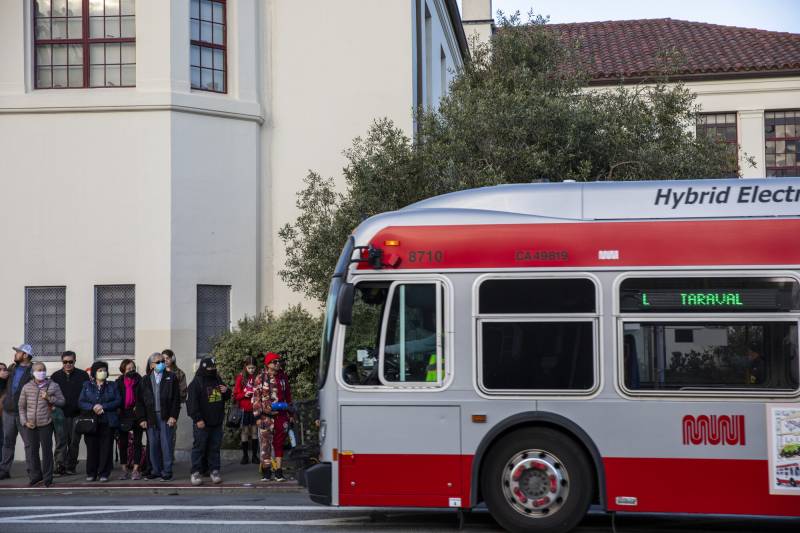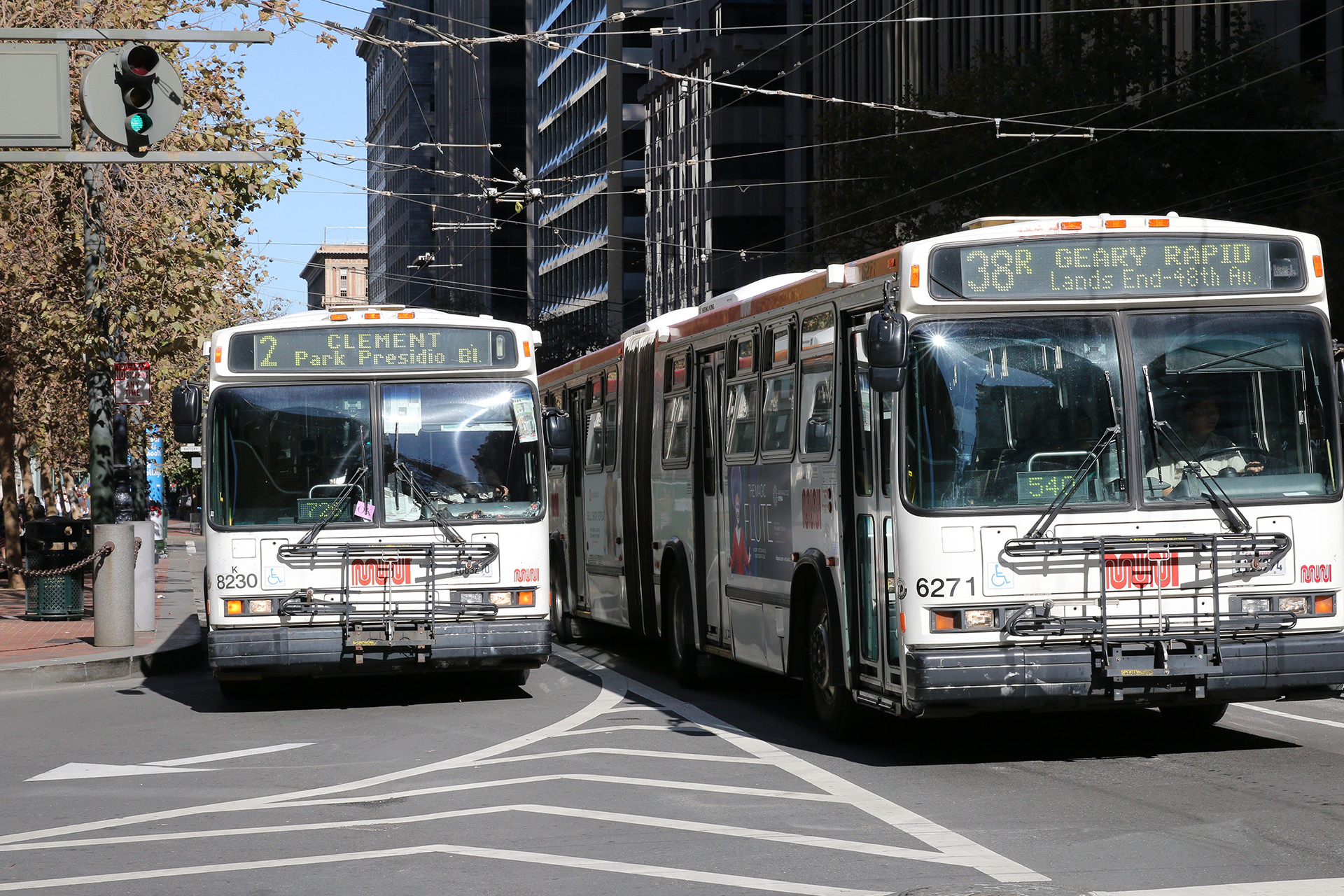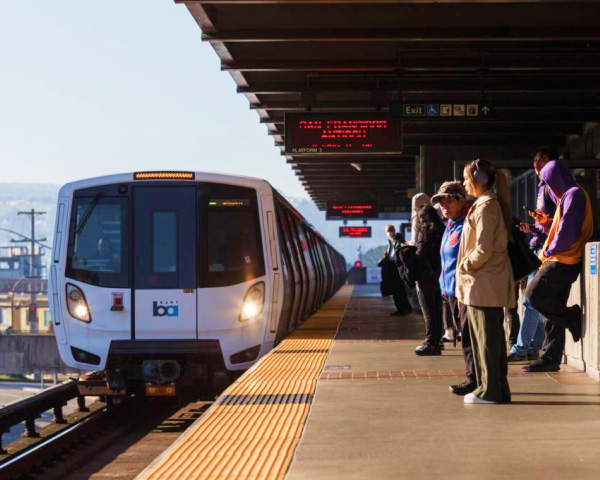San Francisco Muni said it will reduce service on several bus and light-rail lines starting Feb. 1 because of the agency’s budget crisis.
Service reductions include canceling two morning runs of the 1X-California Express and reducing midday trips on three other lines, including the busy 38-Geary. Muni will also run shorter weekend trains on its K-Ingleside and M-Ocean light-rail service.
In its announcement on Wednesday, the San Francisco Municipal Transportation Agency also said it was restoring the 30X-Marina Express bus route, with two morning rush-hour runs from the Marina District to downtown on weekdays. Afternoon and evening service on the line will remain suspended.



